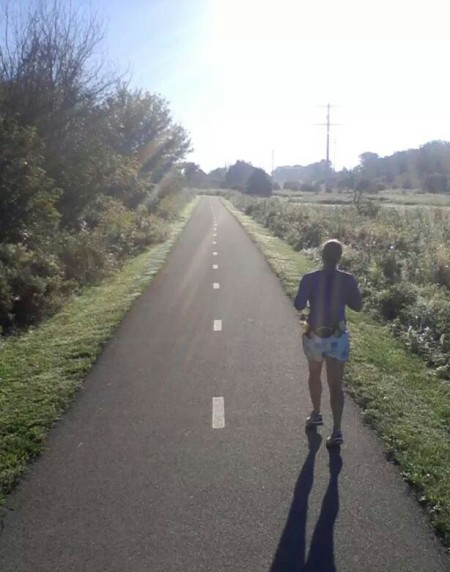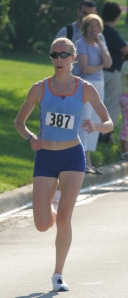Paul Schroeder
You may have heard about the recent uproar concerning University of Michigan coach Brady Hoke sending his quarterback Shane Morris back into a game after suffering a concussion. If you haven’t, check out the gif below:

Shane Morris hit under the chin
Within seconds of being hit, Morris exhibited symptoms of a concussion; he was unsteady on his feet and leaned on another player for support. Due to miscommunications on the parts of coaches, trainers and refs, Morris returned to the game. In the aftermath of this event, students and fans protested in front of University of Michigan president Mark Schlissel’s house demanding changes to the university’s athletic department. In response, Schlissel demanded a reevaluation of the athletic department and a review of safety procedures.
University of Michigan fans and students were right to be concerned for their quarterback’s—and all players’— safety. When an athlete sustains a concussion, it is imperative to provide for cognitive rest to allow for full resolution of symptoms. After the athlete remains symptom-free for 24 hours, it is not only the best evidence-based practice, but also state law to undergo exposure to various challenges before it is safe to obtain medical clearance for safe return to full sport participation. Just because symptoms disappear for 24 hours does not mean that they will not reoccur over the course of the Return to Play (RTP) protocol. The challenges included in the protocol are incremental and daily exposure to the cardiovascular, vestibular/balance, oculomotor, and cognitive systems over the course of several days.
The RTP protocol contains 7 phases:
Phase 1 includes cognitive rest. Phase 1 lasts as long as it takes for symptoms to completely disappear. 85% of concussion cases become symptom-free within 2 weeks; most symptoms subside within 2-3 days. Upon being totally free of any post-concussive symptoms, phases 2 through 7 are intended to occur on 6 successive days. Over the course of these 6 days, the degree of exertion of all above listed body systems is increased and challenged simultaneously.
Phase 2, corresponds to Clinic Day One, which includes light aerobic activity.
Phase 3, or Clinic Day Two, increases cardiovascular loading and adds body weight resistance.
Phase 4, or Clinic Day Three, incorporates dynamic movement, circuit training, head and body position changes, and initiates sports-specific movements, as well as concomitant cognitive loading.
Phase 5, or Clinic Day Four, advances dynamic sport movements and drills, cognitive loading, balance and vestibular challenges, and multiple-task activities.
Phase 6 takes place outside the PT clinic with a Certified Athletic Trainer (ATC) and the team during full-contact practice.
Phase 7 is return to game play.
It is important to understand that in order to safely progress to each successive stage, the athlete needs to be completely SYMPTOM-FREE.
The primary advantage of going through an RTP program in the clinic is the ability for the physical therapist (PT) to closely monitor the patient in a one-on-one, real-time environment. The PT is ideally suited with training in neurological, vestibular, cardiovascular, orthopedic, and balance systems to design and monitor progression through the various phases. Though RTP protocols administered by ATCs, coaches, or parents do occur, they are less than ideal from a perspective of both resources and training. In my opinion, the goal of a thorough RTP program is to sift through the “false positives” that would otherwise indicate a clearing for return to play. This is especially important in a program carried out by someone who has +30 athletes to monitor or by someone who lacks the necessary medical training in coaxing out latent symptoms.
__________________________
Accelerated Rehabilitation Centers offers full-spectrum concussion management services, which includes the RTP Program.
Paul Schroeder is an MPT, CSCS at Accelerated Rehab—Lincoln Park, IL. While owning and operating his own clinic six years ago, Paul developed the RTP Concussion Management Program. He has received training from some of the nation’s top concussion institutions including University of Pittsburgh Medical Center (UPMC), UCLA, Children’s Hospital of Philadelphia (CHOP), and Princeton University. As Accelerated Rehab’s RTP Coordinator, he has appeared on ESPN Sports Medicine Weekly Radio with Dr. Brian Cole, SCORE Values Radio with Dr. Jeffrey Mjaanes, and in the Chicago Sun Times discussing detection, education, and management of concussion injuries. Paul is celebrating three years at Accelerated Rehab. For more information about Paul’s RTP Program, visit our website.



 Posted by Accelerated Rehabilitation Centers
Posted by Accelerated Rehabilitation Centers 



